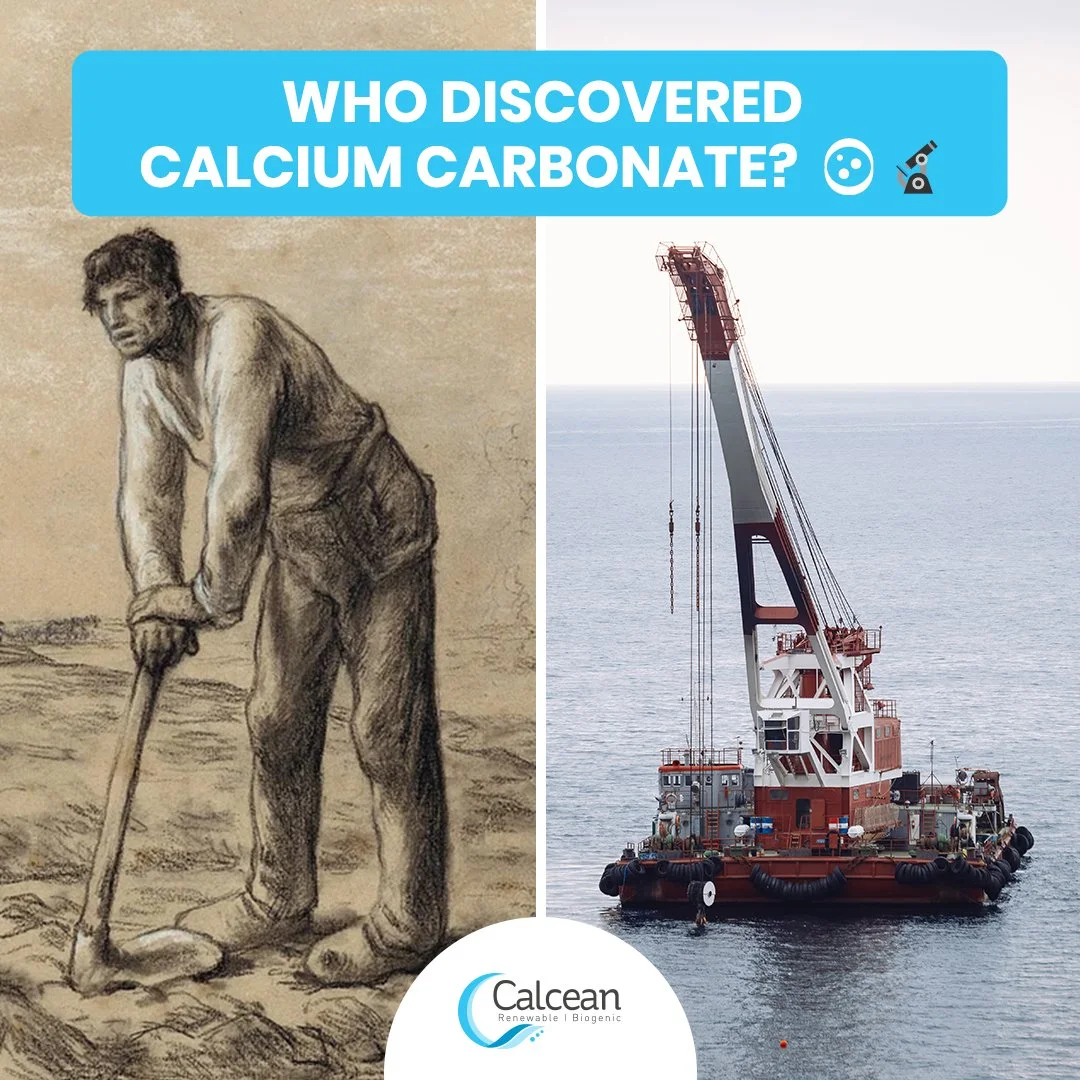From Ancient Discovery to Modern Innovation: The Story of Calcium Carbonate
Calcium carbonate is one of the most important—and widely used—minerals on Earth. Found in everything from ancient monuments to modern packaging, this naturally occurring compound has played a foundational role in human civilization, industry, and now, climate innovation.
But where did calcium carbonate come from, who first recognized its value, and how is it transforming in today’s sustainability-focused world? Let’s explore the journey of this remarkable mineral—from ancient limestone to renewable oolitic aragonite.
🏺 A Brief History: Who Discovered Calcium Carbonate?
While no single individual is credited with discovering calcium carbonate, its presence has been known and utilized for thousands of years. The earliest records of its use trace back to ancient Egypt, where limestone—a natural form of calcium carbonate—was used to build pyramids, sculptures, and temples. The Romans later used it extensively in plaster, mortar, and concrete, innovations that laid the foundation (literally) for Western architecture.
In the scientific world, calcium carbonate was formally classified in the 17th and 18th centuries as mineralogy and chemistry began to take shape. Chemists like Joseph Black studied its composition, and its role in the carbon cycle became better understood over time.
🏭 The Industrial Rise of Calcium Carbonate
By the 19th and 20th centuries, calcium carbonate had become a staple in industrial manufacturing. Extracted primarily from limestone quarries and refined for purity, it was processed into:
Ground Calcium Carbonate (GCC): Produced by crushing natural limestone
Precipitated Calcium Carbonate (PCC): Synthesized chemically for high purity and consistency
Both forms became integral to:
Construction (cement, drywall, concrete)
Paper (coatings and fillers)
Plastics (strength and rigidity)
Paints & coatings
Pharmaceuticals (antacids and dietary supplements)
Despite its versatility, the traditional production of calcium carbonate often relies on non-renewable sources, quarrying, and high-energy processes, which can leave behind a significant environmental footprint.
🌊 Enter Oolitic Aragonite: Nature’s Renewable Alternative
Today, a new form of calcium carbonate is making waves—both literally and figuratively.
Oolitic aragonite is a biogenic, ocean-formed version of calcium carbonate that offers a renewable, low-impact alternative to traditional sources. It forms naturally in warm, shallow marine waters (like those found in The Bahamas), where calcium-rich water precipitates layer by layer, forming smooth, round grains called ooids.
Unlike calcite-based limestone, oolitic aragonite:
Is renewably formed by ocean processes
Requires no mining or blasting
Is naturally non-toxic and silica-free
Helps sequester CO₂ and has a negative carbon footprint
This makes it not just a functional industrial material—but a climate-positive one.
🔧 Modern Uses Across Industries
Calcean’s oolitic aragonite is being used in innovative, sustainable ways across a variety of sectors:
Play & Recreation: As the core of Baha Play Sand, it’s safe, clean, and silica-free—ideal for indoor play spaces and sensory environments.
Green Manufacturing: Used as a natural filler in bioplastics, reducing reliance on petroleum-based materials.
Landscaping & Agriculture: Improves soil structure and provides bioavailable calcium for plants—without harsh chemicals.
Animal Bedding & Arenas: Safe for pets, horses, and livestock, thanks to its soft, pH-balanced, and non-toxic nature.
Carbon Management: Plays a role in carbon sequestration and ocean restoration strategies.
Infill: Cooling, non-toxic, and prevents odors in turf applications (landscape, pet areas, sports fields, backyards)
Paints & Coatings: Improves hide and tint strength, while reducing your embodied carbon
Glass Manufacturing: Low iron and perfect for high clarity glass
♻️ The Future of Calcium Carbonate is Circular
As industries shift toward sustainability and circular economy models, oolitic aragonite stands out as a powerful tool. It's a naturally occurring solution that doesn’t require us to reinvent materials—just rethink the way we source them.
With global pressure to reduce emissions and improve environmental outcomes, materials like oolitic aragonite offer a bridge between performance and planet.
Learn More About Our Ocean-Born Mineral
At Calcean, we’re proud to be pioneering the use of oolitic aragonite in applications that touch everyday life—safely, sustainably, and responsibly.
👉 Visit www.calcean.com to explore how our materials support cleaner manufacturing, greener landscapes, and safer play.
Contact inquiries@calcean.com to learn how we help you meet your goals.

